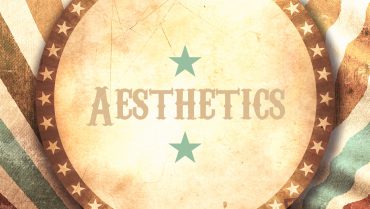The high expectations for the stem cell revolution in medicine are beginning to come to fruition in the field of ophthalmology. For many years, corneal epithelial (limbal) stem cells have been successfully transplanted for the treatment of chemical burns and various other corneal stem cell deficiencies.1More recently, stem cell therapy to regenerate photoreceptors for the restoration of vision as well as cutting-edge glaucoma therapy to heal damaged optic nerves have shown substantial promise in the laboratory.2 In the realm of aesthetics, stem cells have demonstrated enormous potential in treating burns, healing wounds, rejuvenating skin, and reconstructing eyelids.
Historically, the use of stem cells has been hindered by ethical, logistic, and long-term safety concerns. With the discovery and characterization of adult-derived stem cells and the advent of induced pluripotent stem cells (iPSCs), there is no longer a need for embryonic stem cells, and so the major ethical boundary has been surpassed.3 Still, the logistics of harvesting and preparing a substantial population of stem cells is a significant challenge. At this point, one must be wary of false advertising and unsubstantiated claims of the “magical” rejuvenating power of stem cells. In reality, there is extreme promise for the application of stem cell therapy (SCT) to revolutionize aesthetics and oculoplastics. However, only through rigorous scientific research and trouble-shooting will we overcome the boundaries to the clinic and see the legitimate widespread use of stem cells in aesthetics.
A CLOSER LOOK
Adult-derived mesenchymal stem cells (MSCs) in bone marrow are the most well studied, but the acquisition of these cells is low-yield, invasive, and associated with significant donor-site morbidity. The characterization of adipocyte-derived stem cells (ADSCs) suggests that the harvesting of viable MSCs can be a minimally invasive procedure with little ethical, safety, or logistic concerns.4 ADSCs are multipotent, meaning they have the potential to differentiate into multiple cell types for the regeneration of ocular tissues.5 Moreover, ADSCs endogenous to orbital fat have been found to be derived from neural crest as opposed to mesenchyme.6 This unique origin may make these cells optimal for regenerating corneal, retinal, or other ocular tissues. Additionally, these orbital stem cells provide clues to effectively induce differentiation of ADSCs to generate specific tissues useful for oculoplastic surgery.
PROMISING APPLICATIONS
In oculoplastics, stem cells have shown the potential to revolutionize wound healing, skin rejuvenation, burn therapeutics, and eyelid reconstruction. In an interesting report, lacrimal tissue stem cells have been identified for use in regenerative therapeutic approaches aimed at restoring lacrimal gland functions. The authors could develop fully functional bioengineered lacrimal gland replacements that may be a promising treatment of dry eye syndrome in the future.7
Any process where wound healing is impaired can especially benefit from ADSC transplantation. Previously, ADSCs were shown to speed wound healing while preventing scar formation. In one study,8 the gross and histologic results showed that ADSCs significantly accelerated wound closure in normal and diabetic rats, including increased epithelialization and granulation tissue deposition. The investigators showed that ADSCs would be able to express surface molecules of both epithelial and endothelial lineages that means a potential ability to new vessels formation as an important contribution in the wound healing process.

In addition to potentially regenerating damaged tissue, ADSCs secrete growth factors and cytokines that can protect and rejuvenate existing tissue. These characteristics of ADSCs have promising implications for skin rejuvenation. Skin aging is a degenerative process—whether the impetus is smoking, excessive sunlight, or simply time—that is inevitable. Most notably, this degenerative process is characterized by a diminished production of collagen by dermal fibroblasts. ADSCs have been shown to secrete growth factors and cytokines that promote the production of collagen by fibroblasts.9 Indeed, ADSC injections have been shown to decrease wrinkles and strengthen skin in aged mice. Similarly, Kim and colleagues10 demonstrated that ADSCs and their secretory factors could improve UV-B light-induced wrinkles and increase the dermal thickness and collagen contents in mice.
STILL TO COME
When it comes to oculoplastics, aesthetics, and stem cells, the future is bright. Certainly, however, there is a continued need to tease out the complex microenvironmental interactions affecting the migration, differentiation, and functional integration of transplanted cells. Additionally, research to optimize the delivery method, developmental stage, and timeframe of SCT is underway.
1. Dhamodaran K, Subramani M, Ponnalagu M, et al. Ocular stem cells: a status update! Stem Cell Res Ther. 2014;5:56.
2. Sun Y, Williams A, Waisbourd M, et al. Stem cell therapy for glaucoma: science or snake oil? Surv Ophthalmol. 2015;60:93-105.
3. Singh VK, Kalsan M, Kumar N, et al. Induced pluripotent stem cells: applications in regenerative medicine, disease modeling, and drug discovery. Front Cell Dev Biol. 2015;3:2.
4. Zuk PA, Zhu M, Mizuno H, et al. Multilineage cells from human adipose tissue: implications for cell-based therapies. Tissue Eng. 2001;7(2):211-228.
5. Tsuji W, Rubin JP, Marra KG. Adipose-derived stem cells: implications in & tissue regeneration. World J Stem Cells. 2014; 6:312-321.
6. Korn BS, Kikkawa DO, Hicok KC. Identification and characterization of adult stem cells from human orbital adipose tissue. Ophthal Plast Reconstr Surg. 2009;25:27-32.
7. Hirayama M, Tsubota K, Tsuji T. Bioengineered lacrimal gland organ regeneration in vivo. J Funct Biomater. 2015;6:634-649.
8. Nie C, Yang D, Xu J, Si Z, Jin X, Zhang J. Locally administered adipose-derived stem cells accelerate wound healing through differentiation and vasculogenesis. Cell Transplant. 2011;20(2):205-216.
9. Park BS, Jang KA, Sung JH, et al. Adipose-derived stem cells and their secretory factors as a promising therapy for skin aging. Dermatol Surg. 2008;34:1323-1326.
10. Kim WS, Park BS, Park SH, et al. Antiwrinkle effect of adipose-derived stem cell: activation of dermal fibroblast by secretory factors. J Dermatol Sci. 2009;53:96-102.





